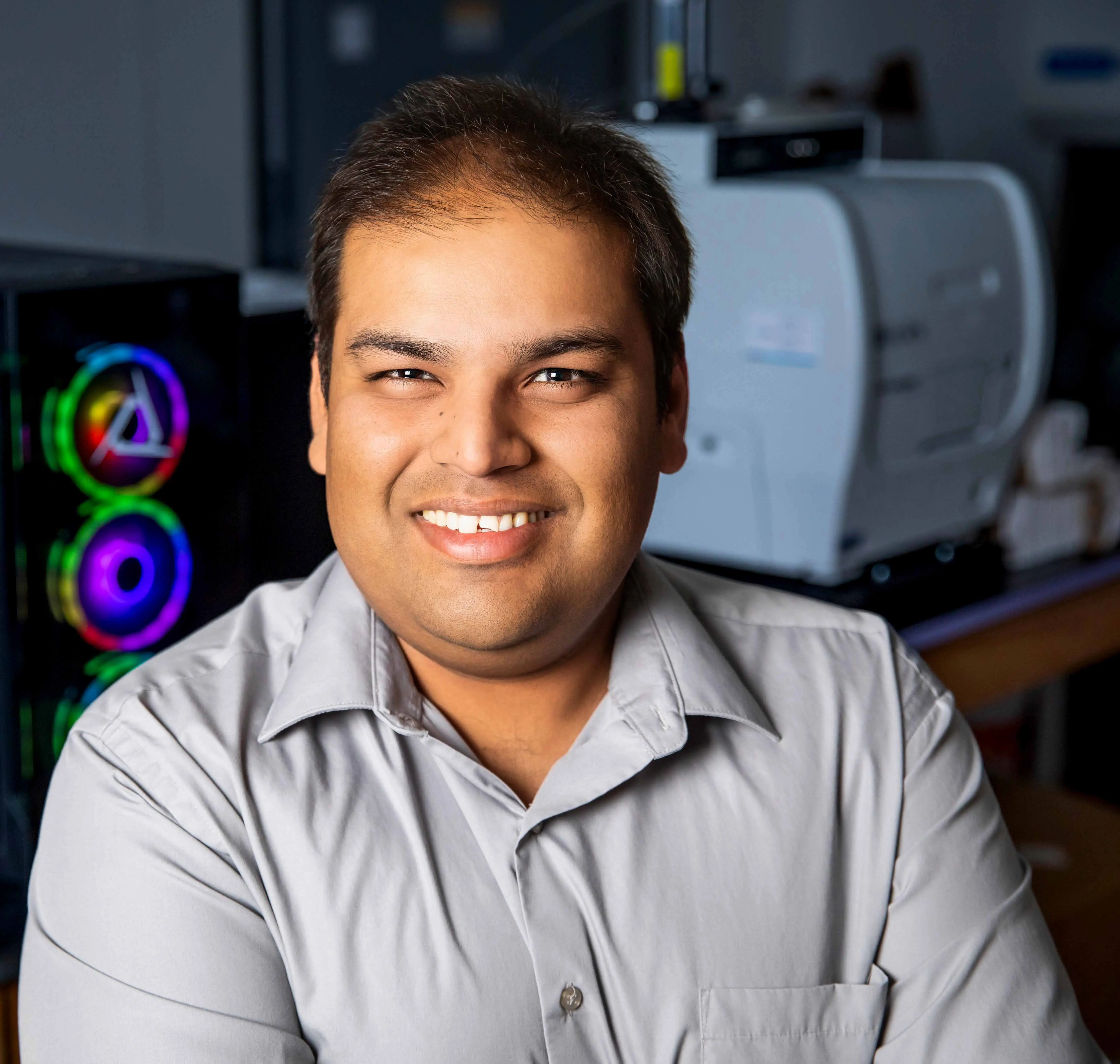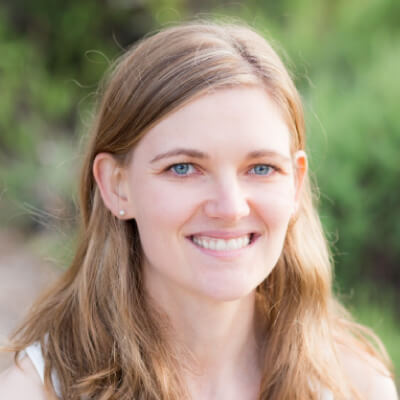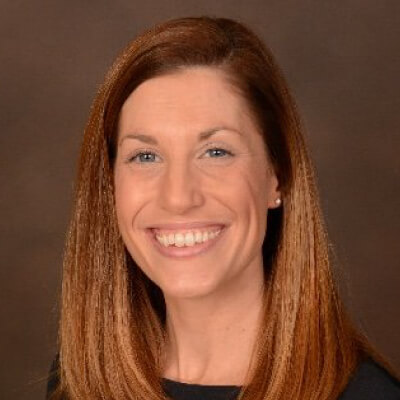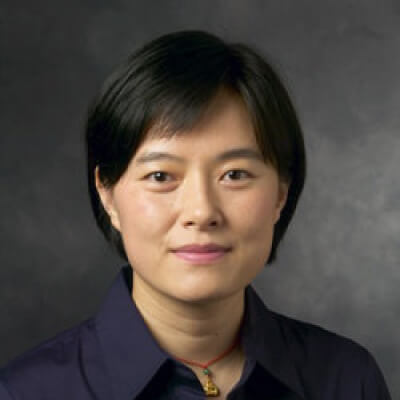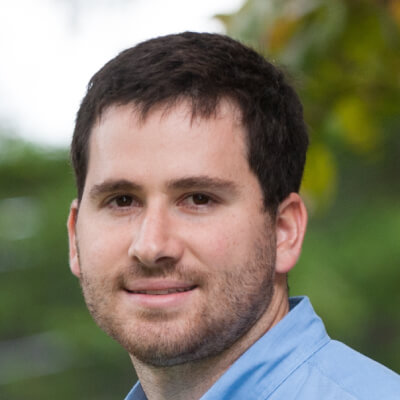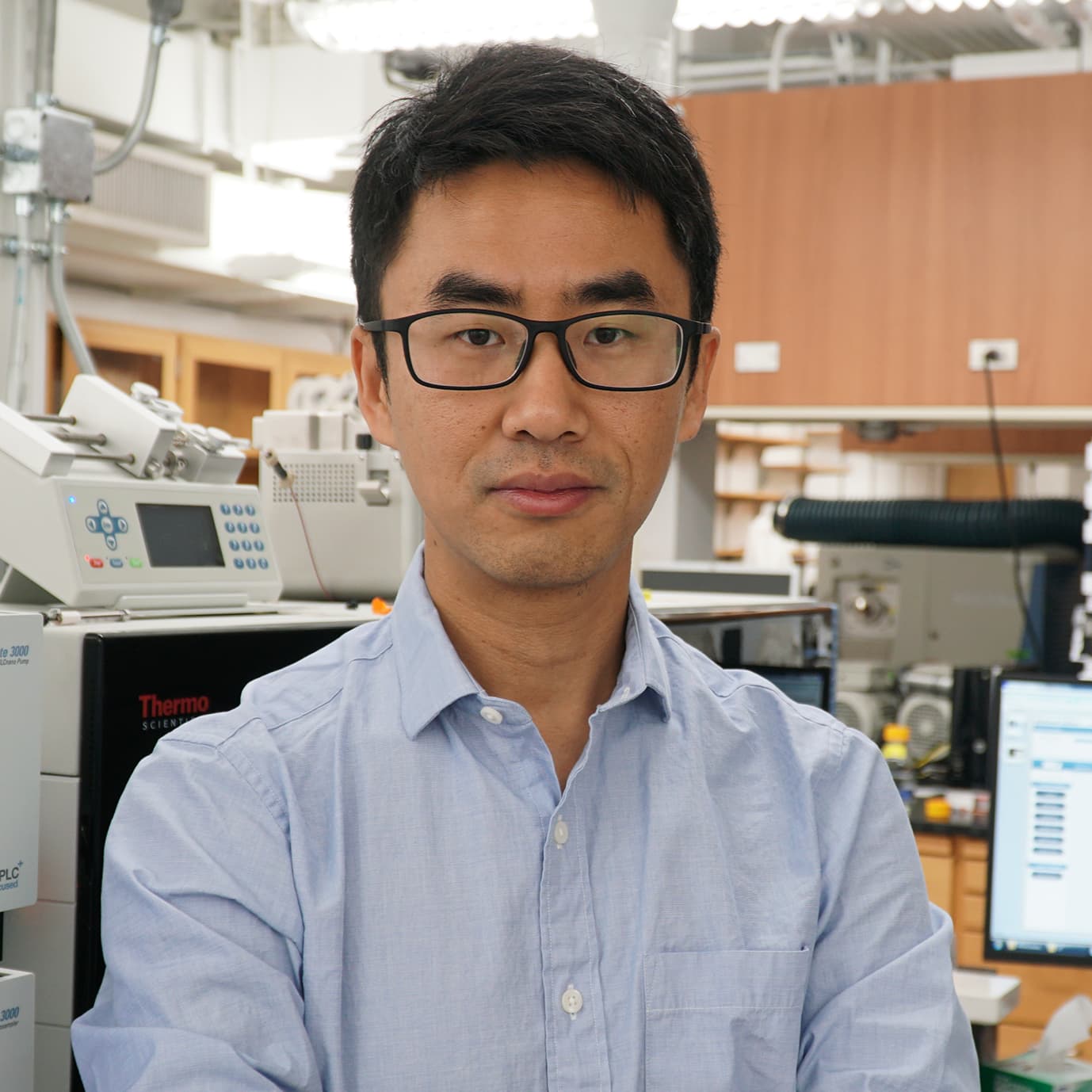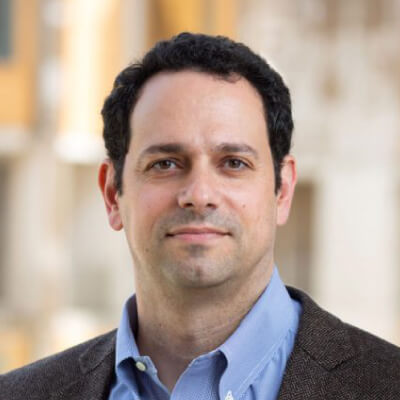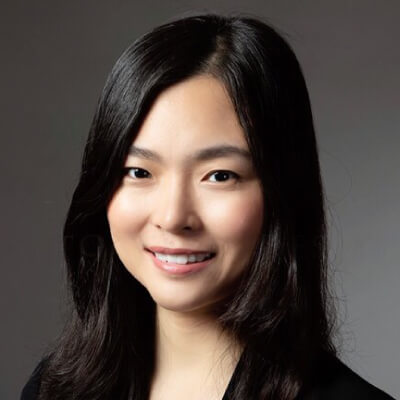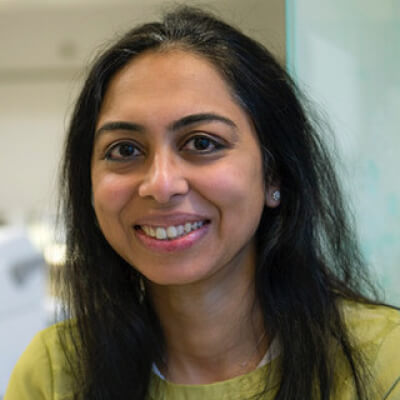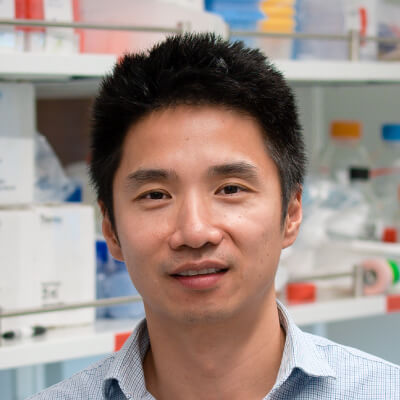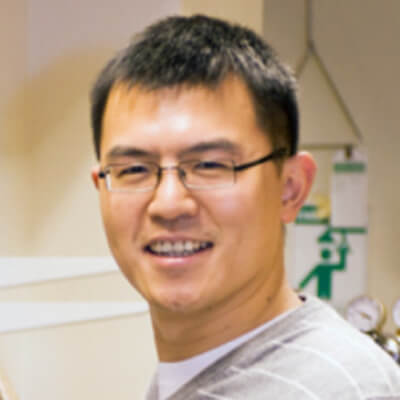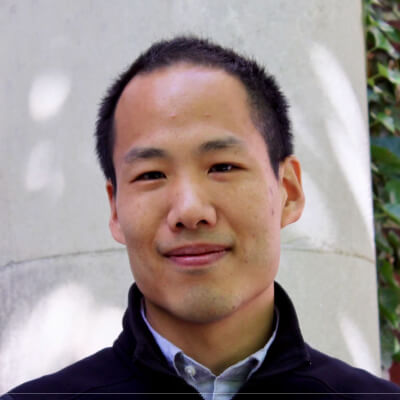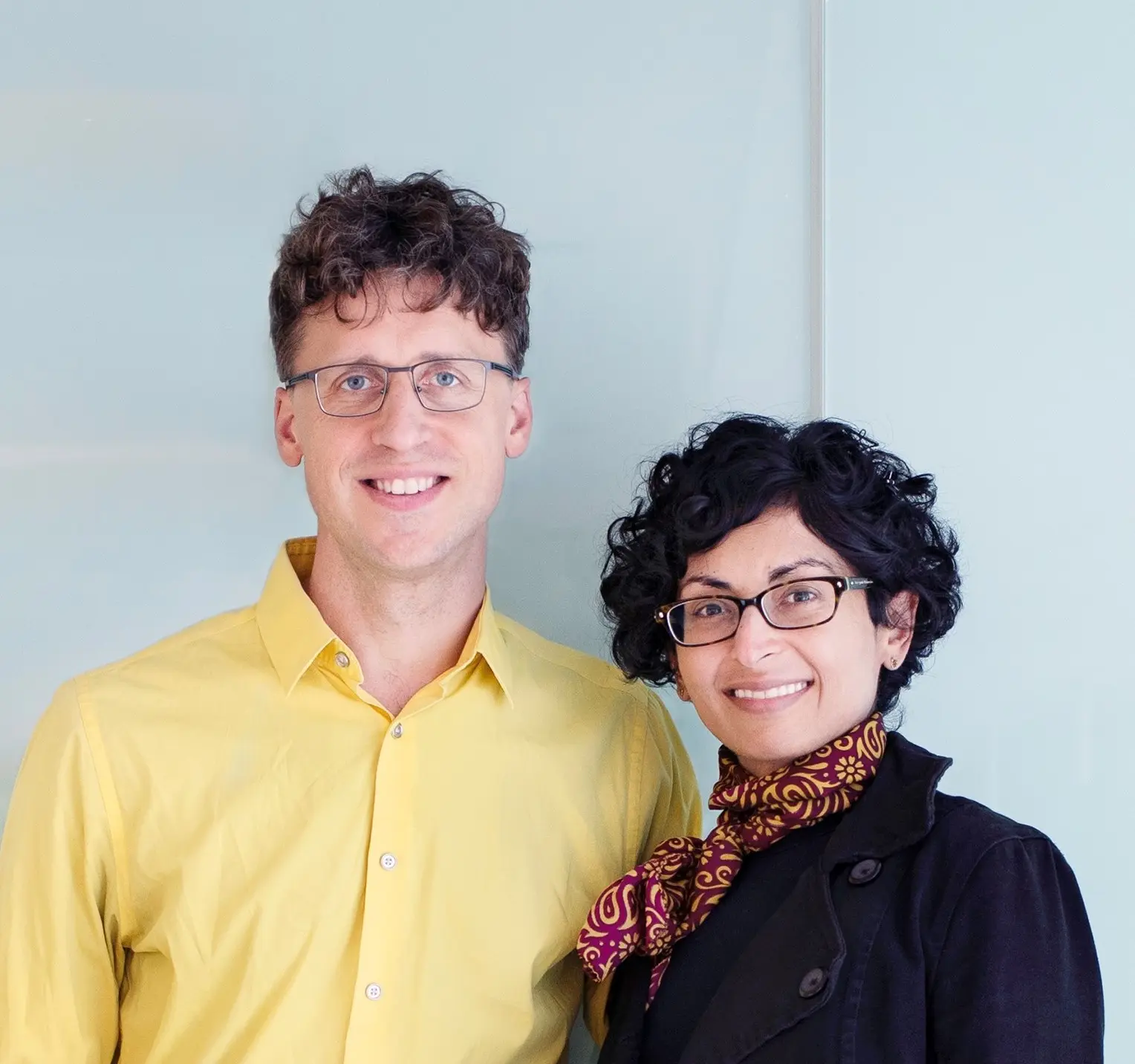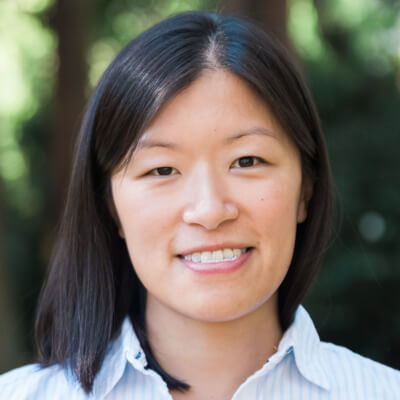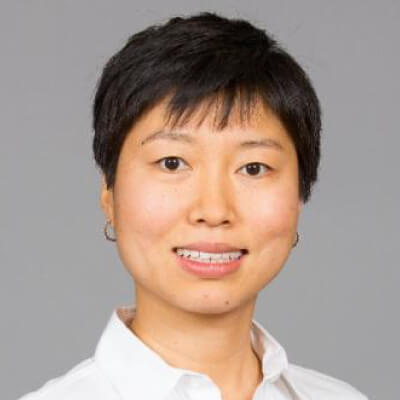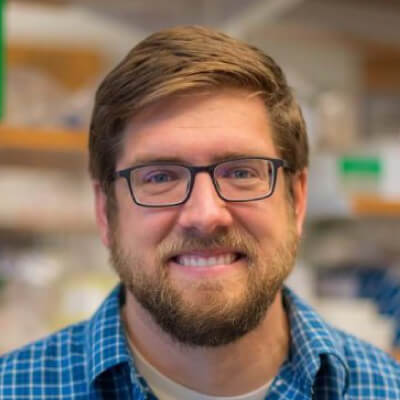Awardees 2017-2025
Scientific Publications
-
Converging mechanism of UM171 and KBTBD4 neomorphic cancer mutations
Xiaowen Xie, Olivia Zhang, Megan J. R. Yeo, Ceejay Lee, Ran Tao, Stefan A. Harry, N. Connor Payne, Eunju Nam, Leena Paul, Yiran Li, Hui Si Kwok, Hanjie Jiang, Haibin Mao, Jennifer L. Hadley, Hong Lin, Melissa Batts, Pallavi M. Gosavi, Vincenzo D’Angiolella, Philip A. Cole, Ralph Mazitschek, Paul A. Northcott, Ning Zheng & Brian B. Liau , Nature, published: 12 February 2025
Read More
-
UM171 glues asymmetric CRL3–HDAC1/2 assembly to degrade CoREST corepressors
Megan J. R. Yeo, Olivia Zhang, Xiaowen Xie, Eunju Nam, N. Connor Payne, Pallavi M. Gosavi, Hui Si Kwok, Irtiza Iram, Ceejay Lee, Jiaming Li, Nicholas J. Chen, Khanh Nguyen, Hanjie Jiang, Zhipeng A. Wang, Kwangwoon Lee, Haibin Mao, Stefan A. Harry, Idris A. Barakat, Mariko Takahashi, Amanda L. Waterbury, Marco Barone, Andrea Mattevi, Steven A. Carr, Namrata D. Udeshi, Liron Bar-Peled, Philip A. Cole, Ralph Mazitschek, Brian B. Liau & Ning Zheng , Nature, published: 12 February 2025
Read More
-
Novel photocrosslinking chemical probes utilized for high-resolution spatial transcriptomics
Leslie Spitalny, Natalie Falco, Whitney England, Tyler Allred, Robert C Spitale , RSC Chem Biol . 2025 Jan 20. doi: 10.1039/d4cb00262h
Read More
-
Mutant-selective AKT inhibition through lysine targeting and neo-zinc chelation
Gregory B Craven, Hang Chu, Jessica D Sun, Jordan D Carelli, Brittany Coyne, Hao Chen, Ying Chen, Xiaolei Ma, Subhamoy Das, Wayne Kong, Adam D Zajdlik, Kin S Yang, Solomon H Reisberg, Peter A Thompson, J Russell Lipford, Jack Taunton , Nature . 2025 Jan;637(8044):205-214
Read More
-
CySP3-96 enables scalable, streamlined, and low-cost sample preparation for cysteine chemoproteomic applications
Flowreen Shikwana, Beeta S Heydari, Samuel Ofori, Cindy Truong, Alexandra C Turmon, Joelle Darrouj, Lara Holoidovsky, Jeffrey L Gustafson, Keriann M Backus , Mol Cell Proteomics . 2024 Dec 18:100898
Read More
-
Boron enabled bioconjugation chemistries
Mengmeng Zheng, Lingchao Kong, Jianmin Gao , Chem Soc Rev . 2024 Dec 9;53(24):11888-11907
Read More
-
Generating cysteine-trypsin cleavage sites with 2-chloroacetamidine capping
Samuel Ofori , Heta S Desai, Flowreen Shikwana, Lisa M Boatner, Emil R Dominguez Iii, José O Castellón, Keriann M Backus , Chem Commun (Camb) . 2024 Aug 15;60(67):8856-8859.
Read More
-
A β-hydroxybutyrate shunt pathway generates anti-obesity ketone metabolites
Maria Dolores Moya-Garzon, Mengjie Wang, Veronica L Li, Xuchao Lyu, Wei Wei, Alan Sheng-Hwa Tung, Steffen H Raun, Meng Zhao, Laetitia Coassolo, Hashim Islam, Barbara Oliveira, Yuqin Dai, Jan Spaas, Antonio Delgado-Gonzalez, Kenyi Donoso, Aurora Alvarez-Buylla, Francisco Franco-Montalban, Anudari Letian, Catherine P Ward, Lichao Liu, Katrin J Svensson , Emily L Goldberg, Christopher D Gardner, Jonathan P Little, Steven M Banik, Yong Xu, Jonathan Z Long , Cell . 2024 Nov 7:S0092-8674(24)01214-5
Read More
-
A platform for mapping reactive cysteines within the immunopeptidome
Chenlu Zhang, Chen Zhou, Assa Magassa, Xiaokang Jin, Deyu Fang, Xiaoyu Zhang , Nat Commun. 2024 Nov 8;15:9698
Read More
-
Redirecting the pioneering function of FOXA1 with covalent small molecules
Sang Joon Won, Yuxiang Zhang, Christopher J Reinhardt, Nicole S MacRae, Kristen E DeMeester, Evert Njomen, Lauren M Hargis, Jarrett R Remsberg, Bruno Melillo, Benjamin F Cravatt, Michael A Erb , Mol Cell . 2024 Oct 9:S1097-2765(24)00780-9.
Read More
-
Chemical and topological design of multicapped mRNA and capped circular RNA to augment translation
Hongyu Chen, Dangliang Liu, Abhishek Aditham, Jianting Guo, Jiahao Huang, Franklin Kostas, Kamal Maher, Mirco J. Friedrich, Ramnik J. Xavier, Feng Zhang & Xiao Wang , Nat Biotechnol . 2024 Sep 23. doi: 10.1038/s41587-024-02393-y.
Read More
-
Disulfide Tethering to Map Small Molecule Binding Sites Transcriptome-wide
Michelle H Moon, Isaac W Vock, Andrew D Streit, Leah J Connor, Julia Senkina, Jonathan A Ellman, Matthew D Simon , ACS Chem Biol . 2024 Sep 20;19(9):2081-2086
Read More
-
PTER is a N-acetyltaurine hydrolase that regulates feeding and obesity
Wei Wei, Xuchao Lyu, Andrew L. Markhard, Sipei Fu, Rachel E. Mardjuki, Peter E. Cavanagh, Xianfeng Zeng, Jakub Rajniak, Nannan Lu, Shuke Xiao, Meng Zhao, Maria Dolores Moya-Garzon, Steven D. Truong, Jonathan Chiu‐Chun Chou, Lianna W. Wat, Saranya Chidambaranathan-Reghupaty, Laetitia Coassolo, Duo Xu, Fangfang Shen, Wentao Huang, Cuauhtemoc B. Ramirez, Cholsoon Jang, Lingyin Li, Katrin J. Svensson, Jonathan Z. Long , Nature . 2024 Sep;633(8028):182-188
Read More
-
SLC17A1/3 transporters mediate renal excretion of Lac-Phe in mice and humans
Veronica L Li, Shuke Xiao, Pascal Schlosser, Nora Scherer, Amanda L Wiggenhorn, Jan Spaas, Alan Sheng-Hwa Tung, Edward D Karoly, Anna Köttgen, Jonathan Z Long , Nat Commun . 2024 Aug 12;15(1):6895
Read More
-
Quantitative Chemical Imaging of Organelles
JoAnn Tinker, Palapuravan Anees, Yamuna Krishnan , Acc Chem Res . 2024 Jul 16;57(14):1906-1917
Read More
-
SuFEx-based chemical diversification for the systematic discovery of CRBN molecular glues
Trever R Carter, Natalia Milosevich, Lucas Dada, James B Shaum, K Barry Sharpless, Seiya Kitamura, Michael A Erb , Bioorg Med Chem . 2024 Apr 4:104:117699
Read More
-
Branched chemically modified poly(A) tails enhance the translation capacity of mRNA
Hongyu Chen, Dangliang Liu, Jianting Guo, Abhishek Aditham, Yiming Zhou, Jiakun Tian, Shuchen Luo, Jingyi Ren, Alvin Hsu, Jiahao Huang, Franklin Kostas, Mingrui Wu, David R. Liu & Xiao Wang , Nat Biotechnol . 2024 Mar 22. doi: 10.1038/s41587-024-02174-7
Read More
-
The cyclimids: Degron-inspired cereblon binders for targeted protein degradation
Saki Ichikawa, N Connor Payne, Wenqing Xu, Chia-Fu Chang, Nandini Vallavoju, Spencer Frome, Hope A Flaxman, Ralph Mazitschek, Christina M Woo , Cell Chem Biol . 2024 Jan 31:S2451-9456(24)00039-4
Read More
-
A class of secreted mammalian peptides with potential to expand cell-cell communication
Amanda L. Wiggenhorn, Hind Z. Abuzaid, Laetitia Coassolo, Veronica L. Li, Julia T. Tanzo, Wei Wei, Xuchao Lyu, Katrin J. Svensson & Jonathan Z. Long , Nat Commun . 2023 Dec 8;14(1):8125
Read More
-
A mechanism of lysosomal calcium entry
Matthew Zajac, Sourajit Mukherjee, Palapuravan Anees, Daphne Oettinger, Katharine Henn, Jainaha Srikumar, Junyi Zou, Anand Saminathan, Yamuna Krishnan , Sci Adv . 2024 Feb 16;10(7):eadk2317
Read More
-
Phosphatase specificity principles uncovered by MRBLE: Dephos and global substrate identification
Jamin B Hein, Hieu T Nguyen, Dimitriya H Garvanska, Isha Nasa, Thomas Kruse, Yinnian Feng, Blanca Lopez Mendez, Norman Davey, Arminja N Kettenbach, Polly M Fordyce, Jakob Nilsson , Mol Syst Biol. 2023 Nov 2:e11782
Read More
-
Detecting organelle-specific activity of potassium channels with a DNA nanodevice
Palapuravan Anees, Anand Saminathan, Ezekiel R. Rozmus, Anke Di, Asrar B. Malik, Brian P. Delisle, Yamuna Krishnan , Nat Biotechnol . 2023 Sep 21. doi: 10.1038/s41587-023-01928-z
Read More
-
A DNA nanodevice for mapping sodium at single-organelle resolution
Junyi Zou, Koushambi Mitra, Palapuravan Anees, Daphne Oettinger, Joseph R. Ramirez, Aneesh Tazhe Veetil, Priyanka Dutta Gupta, Rajini Rao, Jayson J. Smith, Paschalis Kratsios, Yamuna Krishnan , Nat Biotechnol . 2023 Sep 21. doi: 10.1038/s41587-023-01950-1
Read More
-
Phage Display of Two Distinct Warheads to Inhibit Challenging Proteins
Mengmeng Zheng, Jianmin Gao , ACS Chem Biol. 2023 Oct 20;18(10):2259-2266
Read More
-
Curved adhesions mediate cell attachment to soft matrix fibres in three dimensions
Wei Zhang, Chih-Hao Lu, Melissa L. Nakamoto, Ching-Ting Tsai, Anish R. Roy, Christina E. Lee, Yang Yang, Zeinab Jahed, Xiao Li, Bianxiao Cui , Nat Cell Biol. 2023 Oct;25(10):1453-1464
Read More
-
Structure-Based Optimization of Covalent, Small-Molecule Stabilizers of the 14-3-3σ/ERα Protein–Protein Interaction from Nonselective Fragments
Markella Konstantinidou, Emira J. Visser, Edmee Vandenboorn, Sheng Chen, Priyadarshini Jaishankar, Maurits Overmans, Shubhankar Dutta, R. Jeffrey Neitz, Adam R. Renslo, Christian Ottmann, Luc Brunsveld, Michelle R. Arkin , J Am Chem Soc. 2023 Sep 20;145(37):20328-20343
Read More
-
Spatial Atlas of the Mouse Central Nervous System at Molecular Resolution
Hailing Shi, Yichun He, Yiming Zhou, Jiahao Huang, Kamal Maher, Brandon Wang, Zefang Tang, Shuchen Luo, Peng Tan, Morgan Wu, Zuwan Lin, Jingyi Ren, Yaman Thapa, Xin Tang, Ken Y. Chan, Benjamin E. Deverman, Hao Shen, Albert Liu, Jia Liu, Xiao Wang , Nature. 2023 Oct;622(7983):552-561
Read More
-
Targeted Lysosomal Degradation of Secreted and Cell Surface Proteins through the LRP-1 Pathway
Elise Loppinet, Harrison A. Besser, Christina E. Lee, Wei Zhang, Bianxiao Cui, Chaitan Khosla , J Am Chem Soc. 2023 Aug 30;145(34):18705-18710
Read More
-
From Tethered to Freestanding Stabilizers of 14-3-3 Protein-Protein Interactions through Fragment Linking
Emira J. Visser, Priyadarshini Jaishankar, Eline Sijbesma, Marloes A. M. Pennings, Edmee M. F. Vandenboorn, Xavier Guillory, R. Jeffrey Neitz, John Morrow, Shubhankar Dutta, Adam R. Renslo, Luc Brunsveld, Michelle R. Arkin, Christian Ottmann , Angew Chem Int Ed Engl. 2023 Sep 11;62(37):e202308004
Read More
-
Collateral lethality between HDAC1 and HDAC2 exploits cancer-specific NuRD complex vulnerabilities
Yuxiang Zhang, David Remillard, Ugoma Onubogu, Barbara Karakyriakou, Joshua N. Asiaban, Anissa R. Ramos, Kirsten Bowland, Timothy R. Bishop, Paige A. Barta, Stephanie Nance, Adam D. Durbin, Christopher J. Ott, Michalina Janiszewska, Benjamin F. Cravatt, Michael A. Erb , Nat Struct Mol Biol. 2023 Aug;30(8):1160-1171
Read More
-
Direct mapping of ligandable tyrosines and lysines in cells with chiral sulfonyl fluoride probes Spatially resolved single-cell translatomics at molecular resolution
Ying Chen, Gregory B. Craven, Roarke A. Kamber, Adolfo Cuesta, Serhii Zhersh, Yurii S. Moroz, Michael C. Bassik, Jack Taunton , Nat Chem. 2023 Nov;15(11):1616-1625
Read More
-
Decoupling of catalysis and transition state analog binding from mutations throughout a phosphatase revealed by high-throughput enzymology
Craig J. Markin, Daniel A. Mokhtari, Siyuan Du, Tzanko Doukov, Fanny Sunden, Jordan A. Cook, Polly M. Fordyce, Daniel Herschlag , Proc Natl Acad Sci U S A. 2023 Jul 18;120(29):e2219074120
Read More
-
Diazaborine-Mediated Bicyclization of Native Peptides with Inducible Reversibility
Rahi M. Reja, Brittney Chau, Jianmin Gao , Org Lett. 2023 Jun 23;25(24):4489-4492
Read More
-
A single-cell map of antisense oligonucleotide activity in the brain
Meredith A Mortberg, Juliana E Gentile, Naeem M Nadaf, Charles Vanderburg, Sean Simmons, Dan Dubinsky, Adam Slamin, Salome Maldonado, Caroline L Petersen, Nichole Jones, Holly B Kordasiewicz, Hien T Zhao, Sonia M Vallabh, Eric Vallabh Minikel , Nucleic Acids Res. 2023 Aug 11;51(14):7109-7124
Read More
-
Acetyl-CoA biosynthesis drives resistance to histone acetyltransferase inhibition
Timothy R. Bishop, Chitra Subramanian, Eric M. Bilotta, Leopold Garnar-Wortzel, Anissa R. Ramos, Yuxiang Zhang, Joshua N. Asiaban, Christopher J. Ott, Charles O. Rock, Michael A. Erb , Nat Chem Biol. 2023 Oct;19(10):1215-1222
Read More
-
A Systematic Approach to the Discovery of Protein–Protein Interaction Stabilizers
Dyana N. Kenanova, Emira J. Visser, Johanna M. Virta, Eline Sijbesma, Federica Centorrino, Holly R. Vickery, Mengqi Zhong, R. Jeffrey Neitz, Luc Brunsveld, Christian Ottmann, Michelle R. Arkin , ACS Cent Sci. 2023 Apr 18;9(5):937-946
Read More
-
Simultaneous inhibition of endocytic recycling and lysosomal fusion sensitizes cells and tissues to oligonucleotide therapeutics
Brendan T Finicle, Kazumi H Eckenstein, Alexey S Revenko, Brooke A Anderson, W Brad Wan, Alison N McCracken, Daniel Gil, David A Fruman, Stephen Hanessian, Punit P Seth, Aimee L Edinger , Nucleic Acids Res. 2023 Feb 28;51(4):1583-1599
Read More
-
Plasma membrane depolarization reveals endosomal escape incapacity of cell-penetrating peptides
Marc Serulla, Palapuravan Anees, Ali Hallaj, Evgeniya Trofimenko, Tara Kalia, Yamuna Krishnan, Christian Widmann , Eur J Pharm Biopharm. 2023 Mar:184:116-124
Read More
-
G-rich motifs within phosphorothioate-based antisense oligonucleotides (ASOs) drive activation of FXN expression through indirect effects
Feng Wang, Ezequiel Calvo-Roitberg, Julia M Rembetsy-Brown, Minggang Fang, Jacquelyn Sousa, Zachary J Kartje, Pranathi Meda Krishnamurthy, Jonathan Lee, Michael R Green, Athma A Pai, Jonathan K Watts , Nucleic Acids Res. 2022 Dec 9;50(22):12657-12673
Read More
-
IFITM proteins assist cellular uptake of diverse linked chemotypes
Kevin Lou, Douglas R Wassarman, Tangpo Yang, YiTing Paung, Ziyang Zhang, Thomas A O'Loughlin, Megan K Moore, Regina K Egan, Patricia Greninger, Cyril H Benes, Markus A Seeliger, Jack Taunton, Luke A Gilbert, Kevan M Shokat , Science. 2022 Dec 9;378(6624):1097-1104
Read More
-
Molecular and Structural Characterization of Lenalidomide-Mediated Sequestration of eIF3i
Zhi Lin, Dacheng Shen, Bo Yang, Christina M. Woo , ACS Chem Biol. 2022 Nov 18;17(11):3229-3237
Read More
-
The E3 ligase adapter cereblon targets the C-terminal cyclic imide degron
Saki Ichikawa, Hope A. Flaxman, Wenqing Xu, Nandini Vallavoju, Hannah C. Lloyd, Binyou Wang, Dacheng Shen, Matthew R. Pratt, Christina M. Woo , Nature. 2022 Oct;610(7933):775-782
Read More
-
The evolution of organellar calcium mapping technologies
Cell Calcium. 2022 Dec:108:102658 , Matthew Zajac, Souvik Modi, Yamuna Krishnan
Read More
-
Fast and Cysteine-Specific Modification of Peptides, Proteins and Bacteriophage Using Chlorooximes
Fa‐Jie Chen, Mengmeng Zheng, Vincent Nobile, Jianmin Gao , Chemistry. 2022 Apr 6;28(20):e202200058
Read More
-
Analysis of non-human primate models for evaluating prion disease therapeutic efficacy
Meredith A Mortberg, Eric Vallabh Minikel, Sonia M Vallabh , PLoS Pathog. 2022 Aug 22;18(8):e1010728
Read More
-
Lysine-Targeting Reversible Covalent Inhibitors with Long Residence Time
Rahi M. Reja, Wenjian Wang, Yuhan Lyu, Fredrik Haeffner, Jianmin Gao , J Am Chem Soc. 2022 Aug 31;144(34):15885-15893
Read More
-
Intratracheally administered LNA gapmer antisense oligonucleotides induce robust gene silencing in mouse lung fibroblasts
Minwook Shin, Io Long Chan, Yuming Cao, Alisha M Gruntman, Jonathan Lee, Jacquelyn Sousa, Tomás C Rodríguez, Dimas Echeverria, Gitali Devi, Alexandre J Debacker, Michael P Moazami, Pranathi Meda Krishnamurthy, Julia M Rembetsy-Brown, Karen Kelly, Onur Yukselen, Elisa Donnard, Teagan J Parsons, Anastasia Khvorova, Erik J Sontheimer, René Maehr, Manuel Garber, Jonathan K Watts , Nucleic Acids Res. 2022 Aug 26;50(15):8418-8430
Read More
-
An exercise-inducible metabolite that suppresses feeding and obesity
Veronica L. Li, Yang He, Kévin Contrepois, Hailan Liu, Joon T. Kim, Amanda L. Wiggenhorn, Julia T. Tanzo, Alan Sheng-Hwa Tung, Xuchao Lyu, Peter-James H. Zushin, Robert S. Jansen, Basil Michael, Kang Yong Loh, Andrew C. Yang, Christian S. Carl, Christian T. Voldstedlund, Wei Wei, Stephanie M. Terrell, Benjamin C. Moeller, Rick M. Arthur, Gareth A. Wallis, Koen van de Wetering, Andreas Stahl, Bente Kiens, Erik A. Richter, Steven M. Banik, Michael P. Snyder, Yong Xu, Jonathan Z. Long , Nature. 2022 Jun;606(7915):785-790
Read More
-
Reversible lysine-targeted probes reveal residence time-based kinase selectivity
Tangpo Yang, Adolfo Cuesta, Xiaobo Wan, Gregory B. Craven, Brad Hirakawa, Penney Khamphavong, Jeffrey R. May, John C. Kath, John D. Lapek, Sherry Niessen, Alma L. Burlingame, Jordan D. Carelli, Jack Taunton , Nat Chem Biol. 2022 Sep;18(9):934-941
Read More
-
Divalent siRNAs are bioavailable in the lung and efficiently block SARS-CoV-2 infection
Vignesh N. Hariharan, Minwook Shin, Ching-Wen Chang, Daniel O’Reilly, Annabelle Biscans, Ken Yamada, Zhiru Guo, Mohan Somasundaran, Qi Tang, Kathryn Monopoli, Pranathi Meda Krishnamurthy, Gitali Devi, Nicholas McHugh, David A. Cooper, Dimas Echeverria, John Cruz, Io Long Chan, Ping Liu, Sun-Young Lim, Jill McConnell, Satya Prakash Singh, Samuel Hildebrand, Jacquelyn Sousa, Sarah M. Davis, Zachary Kennedy, Chantal Ferguson, Bruno M. D. C. Godinho, Yann Thillier, Jillian Caiazzi, Socheata Ly, Manish Muhuri, Karen Kelly, Fiachra Humphries, Alyssa Cousineau, Krishna Mohan Parsi, Qi Li, Yang Wang, René Maehr, Guangping Gao, Dmitry Korkin, William M. McDougall, Robert W. Finberg, Katherine A. Fitzgerald, Jennifer P. Wang, Jonathan K. Watts, Anastasia Khvorova , Proc Natl Acad Sci U S A. 2023 Mar 14;120(11):e2219523120
Read More
-
Spatiotemporally resolved transcriptomics reveals subcellular RNA kinetic landscape
Jingyi Ren, Haowen Zhou, Hu Zeng, Connie Kangni Wang, Jiahao Huang, Xiaojie Qiu, Xin Sui, Qiang Li, Xunwei Wu, Zuwan Lin, Jennifer A. Lo, Kamal Maher, Yichun He, Xin Tang, Judson Lam, Hongyu Chen, Brian Li, David E. Fisher, Jia Liu, Xiao Wang , Nat Methods. 2023 May;20(5):695-705
Read More
-
Exploiting Endogenous Enzymes for Cancer-Cell Selective Metabolic Labeling of RNA in Vivo
Samantha Beasley, Abigail Vandewalle, Monika Singha, Kim Nguyen, Whitney England, Eric Tarapore, Nan Dai, Ivan R. Corrêa, Scott X. Atwood, Robert C. Spitale , J Am Chem Soc. 2022 Apr 27;144(16):7085-7088
Read More
-
Regional variability and genotypic and pharmacodynamic effects on PrP concentration in the CNS
Meredith A. Mortberg, Hien T. Zhao, Andrew G. Reidenbach, Juliana E. Gentile, Eric Kuhn, Jill O'Moore, Patrick M. Dooley, Theresa R. Connors, Curt Mazur, Shona W. Allen, Bianca A. Trombetta, Alison J. McManus, Matthew R. Moore, Jiewu Liu, Deborah E. Cabin, Holly B. Kordasiewicz, Joel Mathews, Steven E. Arnold, Sonia M. Vallabh, Eric Vallabh Minikel , JCI Insight. 2022 Mar 22;7(6):e156532
Read More
-
Profiling the Landscape of Drug Resistance Mutations in Neosubstrates to Molecular Glue Degraders
Pallavi M. Gosavi, Kevin C. Ngan, Megan J. R. Yeo, Cindy Su, Jiaming Li, Nicholas Z. Lue, Samuel M. Hoenig, Brian B. Liau , ACS Cent Sci. 2022 Apr 27;8(4):417-429
Read More
-
Quantification of Antisense Oligonucleotides by Splint Ligation and Quantitative Polymerase Chain Reaction
Minwook Shin, Pranathi Meda Krishnamurthy, Gitali Devi, Jonathan K. Watts , Nucleic Acid Ther. 2022 Feb;32(1):66-73
Read More
-
Suppression of mutant C9orf72 expression by a potent mixed backbone antisense oligonucleotide
Hélène Tran, Michael P. Moazami, Huiya Yang, Diane McKenna-Yasek, Catherine L. Douthwright, Courtney Pinto, Jake Metterville, Minwook Shin, Nitasha Sanil, Craig Dooley, Ajit Puri, Alexandra Weiss, Nicholas Wightman, Heather Gray-Edwards, Miklos Marosfoi, Robert M. King, Thomas Kenderdine, Daniele Fabris, Robert Bowser, Jonathan K. Watts, Robert H. Brown , Nat Med. 2022 Jan;28(1):117-124
Read More
-
Development of Photolenalidomide for Cellular Target Identification
Zhi Lin, Yuka Amako, Farah Kabir, Hope A. Flaxman, Bogdan Budnik, Christina M. Woo , J Am Chem Soc. 2022 Jan 12;144(1):606-614
Read More
-
A lysosome-targeted DNA nanodevice selectively targets macrophages to attenuate tumours
Chang Cui, Kasturi Chakraborty, Xu Anna Tang, Kelly Q. Schoenfelt, Alexandria Hoffman, Ariane Blank, Blake McBeth, Natalie Pulliam, Catherine A. Reardon, Swati A. Kulkarni, Tomas Vaisar, Andrea Ballabio, Yamuna Krishnan, Lev Becker , Nat Nanotechnol. 2021 Dec;16(12):1394-1402
Read More
-
Impact of increased APP gene dose in Down syndrome and the Dp16 mouse model
Mariko Sawa, Cassia Overk, Ann Becker, Dominique Derse, Ricardo Albay, Kim Weldy, Ahmad Salehi, Thomas G. Beach, Eric Doran, Elizabeth Head, Y. Eugene Yu, William C Mobley , Alzheimers Dement. 2022 Jun;18(6):1203-1234
Read More
-
uPIC-M_ Efficient and Scalable Preparation of Clonal Single Mutant Libraries for High-Throughput Protein Biochemistry
Mason J Appel, Scott A Longwell, Maurizio Morri, Norma Neff, Daniel Herschlag, Polly M Fordyce , ACS Omega. 2021 Nov 2;6(45):30542-30554
Read More
-
Tubular lysosomes harbor active ion gradients and poise macrophages for phagocytosis
Bhavyashree Suresh, Anand Saminathan, Kasturi Chakraborty, Matthew Zajac, Chang Cui, Lev Becker, Yamuna Krishnan , Proc Natl Acad Sci U S A. 2021 Oct 12;118(41):e2113174118
Read More
-
High throughput and quantitative enzymology in the genomic era
D.A. Mokhtari, M.J. Appel, P.M. Fordyce, D. Herschlag , Curr Opin Struct Biol. 2021 Dec:71:259-273
Read More
-
Mechanistic Analysis of Age-Related Clinical Manifestations in Down Syndrome
Xu-Qiao Chen, Zhuo Xing, Quang-Di Chen, Richard J. Salvi, Xuming Zhang, Benjamin Tycko, William C. Mobley, Y. Eugene Yu , Front Aging Neurosci. 2021 Jul 1:13:700280
Read More
-
Tissue-specific targeting of DNA nanodevices in a multicellular living organism
Kasturi Chakraborty, Palapuravan Anees, Sunaina Surana, Simona Martin, Jihad Aburas, Sandrine Moutel, Franck Perez, Sandhya P Koushika, Paschalis Kratsios, Yamuna Krishnan , Elife. 2021 Jul 28:10:e67830
Read More
-
Fundamentals to function_ Quantitativeand scalable approachesfor measuring protein stability
Beatriz Atsavapranee, Catherine D. Stark, Fanny Sunden,2 Samuel Thompson, Polly M. Fordyce , Cell Syst. 2021 Jun 16; 12(6): 547–560
Read More
-
Revealing enzyme functional architecture via high-throughput microfluidic enzyme kinetics
C J Markin, D A Mokhtari, F Sunden, M J Appel, E Akiva, S A Longwell, C Sabatti, D Herschlag, P M Fordyce , Science. 2021 Jul 23;373(6553):eabf8761
Read More
-
Chemical Inhibition of ENL/AF9 YEATS Domains in Acute Leukemia
Leopold Garnar-Wortzel, Timothy R. Bishop, Seiya Kitamura, Natalia Milosevich, Joshua N. Asiaban, Xiaoyu Zhang, Qinheng Zheng, Emily Chen, Anissa R. Ramos, Christopher J. Ackerman, Eric N. Hampton, Arnab K. Chatterjee, Travis S. Young, Mitchell V. Hull, K. Barry Sharpless, Benjamin F. Cravatt, Dennis W. Wolan, Michael A. Erb , ACS Cent Sci. 2021 May 26;7(5):815-830
Read More
-
Nuisance compounds in cellular assays
Jayme L Dahlin, Douglas S Auld, Ina Rothenaigner, Steve Haney, Jonathan Z Sexton, J Willem M Nissink, Jarrod Walsh, Jonathan A Lee, John M Strelow, Francis S Willard, Lori Ferrins, Jonathan B Baell, Michael A Walters, Bruce K Hua, Kamyar Hadian, Bridget K Wagner , Cell Chem Biol. 2021 Mar 18;28(3):356-370
Read More
-
Quantitative Imaging of Biochemistry in Situ and at the Nanoscale
Yamuna Krishnan, Junyi Zou, Maulik S Jani , ACS Cent Sci. 2020 Nov 25;6(11):1938-1954
Read More
-
Fluorescence Anisotropy-Based Tethering for Discovery of Protein-Protein Interaction Stabilizers
Eline Sijbesma, Bente A. Somsen, Galen P. Miley, Iris A. Leijten-van de Gevel, Luc Brunsveld, Michelle R. Arkin, Christian Ottmann , ACS Chem Biol. 2020 Dec 18;15(12):3143-3148
Read More
-
Modulating Androgen Receptor-Driven Transcription in Prostate Cancer with Selective CDK9 Inhibitors
André Richters, Shelby K Doyle, David B Freeman, Christina Lee, Becky S Leifer, Sajjeev Jagannathan, Florian Kabinger, Jošt Vrabič Koren, Nicholas B Struntz, Julie Urgiles, Ryan A Stagg, Brice H Curtin, Deep Chatterjee, Sebastian Mathea, Peter J Mikochik, Tamara D Hopkins, Hua Gao, Jonathan R Branch, Hong Xin, Lori Westover, Gilles C Bignan, Brent A Rupnow, Kristen L Karlin, Calla M Olson, Thomas F Westbrook, Joseph Vacca, Chris M Wilfong, B Wesley Trotter, Douglas C Saffran, Norbert Bischofberger, Stefan Knapp, Joshua W Russo, Ian Hickson, James R Bischoff, Marco M Gottardis, Steven P Balk, Charles Y Lin, Marius S Pop, Angela N Koehler , Cell Chem Biol. 2021 Feb 18;28(2):134-147.e14
Read More
-
Transcription Factor Inhibition_Lessons Learned and Emerging Targets
Andrew Chen, Angela N Koehler , Trends Mol Med. 2020 May;26(5):508-518
Read More
-
Programmable m6A modification of cellular RNAs with a Cas13-directed methyltransferase
Christopher Wilson, Peter J Chen, Zhuang Miao, David R Liu , Nat Biotechnol. 2020 Dec;38(12):1431-1440
Read More
-
Structure-Aided Development of Small-Molecule Inhibitors of ENPP1, the Extracellular Phosphodiesterase of the Immunotransmitter cGAMP
Jacqueline A Carozza, Jenifer A Brown, Volker Böhnert, Daniel Fernandez, Yasmeen AlSaif, Rachel E Mardjuki, Mark Smith, Lingyin Li , Cell Chem Biol. 2020 Nov 19;27(11):1347-1358.e5
Read More
-
Cytosine and adenine base editing of the brain, liver, retina, heart and skeletal muscle of mice via adeno-associated viruses
Jonathan M Levy, Wei-Hsi Yeh, Nachiket Pendse, Jessie R Davis, Erin Hennessey, Rossano Butcher, Luke W Koblan, Jason Comander, Qin Liu, David R Liu , Nat Biomed Eng. 2020 Jan;4(1):97-110
Read More
-
Discovery of Lysine-Targeted eIF4E Inhibitors through Covalent Docking
Xiaobo Wan, Tangpo Yang, Adolfo Cuesta, Xiaming Pang, Trent E. Balius, John J. Irwin, Brian K. Shoichet, Jack Taunton , J Am Chem Soc. 2020 Mar 18;142(11):4960-4964
Read More
-
Small Molecule Interactome Mapping by Photo-Affinity Labeling (SIM-PAL) to Identify Binding Sites of Small Molecules on a Proteome-Wide Scale
Hope A. Flaxman, David K. Miyamoto, Christina M. Woo , Curr Protoc Chem Biol. 2019 Dec;11(4):e75
Read More
-
Discovery of a Celecoxib Binding Site on Prostaglandin E Synthase (PTGES) with a Cleavable Chelation-Assisted Biotin Probe
David K. Miyamoto, Hope A. Flaxman, Hung-Yi Wu, Jinxu Gao, Christina M. Woo , ACS Chem Biol. 2019 Dec 20;14(12):2527-2532
Read More
-
Alzheimer Disease Pathogenesis Insights From Molecular and Cellular Biology Studies of Oligomeric Aβ and Tau Species
Xu-Qiao Chen, William C Mobley , Front Neurosci. 2019 Jun 21:13:659
Read More
-
Exploring the Pathogenesis of Alzheimer Disease in Basal Forebrain Cholinergic Neurons Converging Insights From Alternative Hypotheses
Xu-Qiao Chen, William C. Mobley , Front Neurosci. 2019 May 7:13:446
Read More
-
STING Polymer Structure Reveals Mechanisms for Activation, Hyperactivation, and Inhibition
Sabrina L. Ergun, Daniel Fernandez, Thomas M. Weiss, Lingyin Li , Cell. 2019 Jul 11;178(2):290-301.e10
Read More
-
Next-Generation Peptide Nucleic Acid Chimeras Exhibit HighAffinity and Potent Gene Silencing
Alexandre J. Debacker, Vivek K. Sharma, Pranathi Meda Krishnamurthy, Daniel O’Reilly, Rachel Greenhill, and Jonathan K. Watts , Biochemistry. 2019 Feb 12;58(6):582-589
Read More
-
Continuous evolution of base editors with expanded target compatibility and improved activity
Benjamin W Thuronyi, Luke W Koblan, Jonathan M Levy, Wei-Hsi Yeh, Christine Zheng, Gregory A Newb, Christopher Wilson, Mantu Bhaumik, Olga Shubina-Oleinik, Jeffrey R Holt, David R Liu , Nat Biotechnol. 2019 Sep;37(9):1070-1079
Read More
-
Circularly permuted and PAM-modified Cas9 variants broaden the targeting scope of base editors
Tony P Huang, Kevin T Zhao, Shannon M Miller, Nicole M Gaudelli, Benjamin L Oakes, Christof Fellmann, David F Savage, David R Liu , Nat Biotechnol. 2019 Jun;37(6):626-631
Read More
-
Analysis and minimization of cellular RNA editing by DNA adenine base editor
Holly A Rees, Christopher Wilson, Jordan L Doman, David R Liu , Sci Adv. 2019 May 8;5(5):eaax5717
Read More
-
A Binding Site Hotspot Map of the FKBP12–Rapamycin–FRB Ternary Complex by Photoaffinity Labeling and Mass Spectrometry-Based Proteomics
Hope A Flaxman, Chia-Fu Chang, Hung-Yi Wu, Carter H Nakamoto, Christina M Woo , J Am Chem Soc. 2019 Jul 31;141(30):11759-11764
Read More
-
Stabilization of the Max Homodimer with a Small Molecule Attenuates Myc-Driven Transcription
, Cell Chem Biol. 2019 May 16;26(5):711-723.e14
Read More
FREQUENTLY ASKED QUESTIONS
Applications will be assessed, and Awards will be made based upon the following criteria:
- Scientific merit of the research LOI and/or Proposal
- Relevance of proposed research to the mission of the Ono Initiative
- Significance
- Innovation
- Approach
- Technical considerations for the research
- Qualifications and relevant experience of the PI
- Evidence of a suitable research environment
The Ono Pharma Foundation selects all Awardees based upon recommendations of its Scientific Advisory Board (“SAB”), which is comprised of outside experts from the fields of Chemical Biology.


